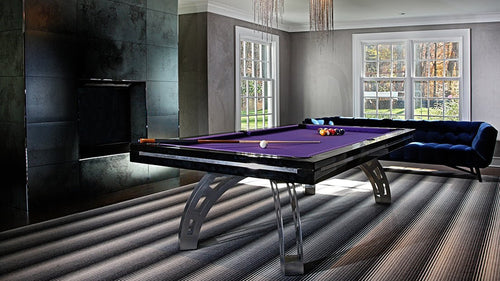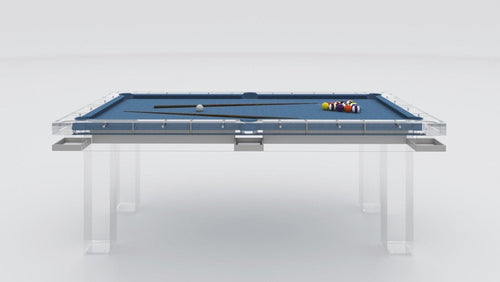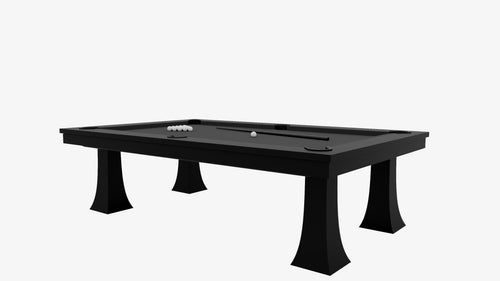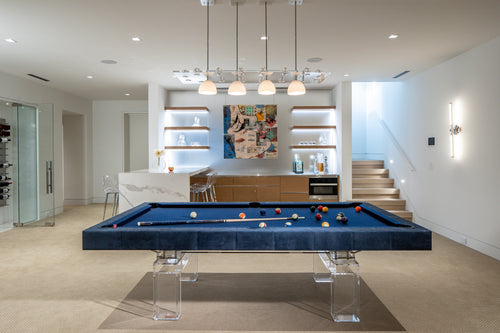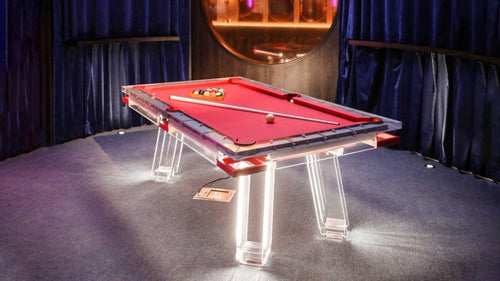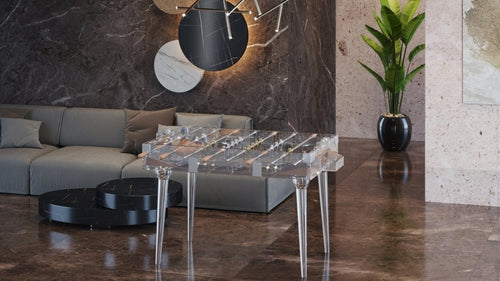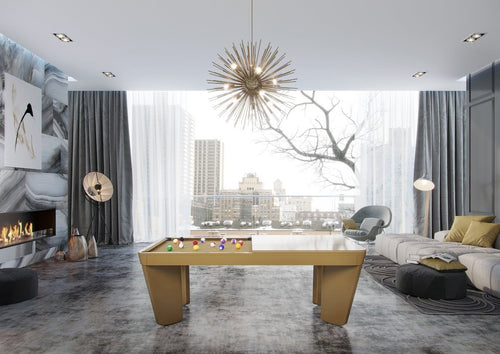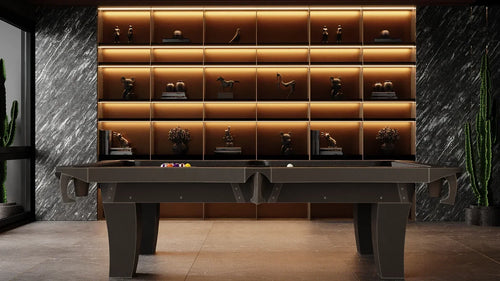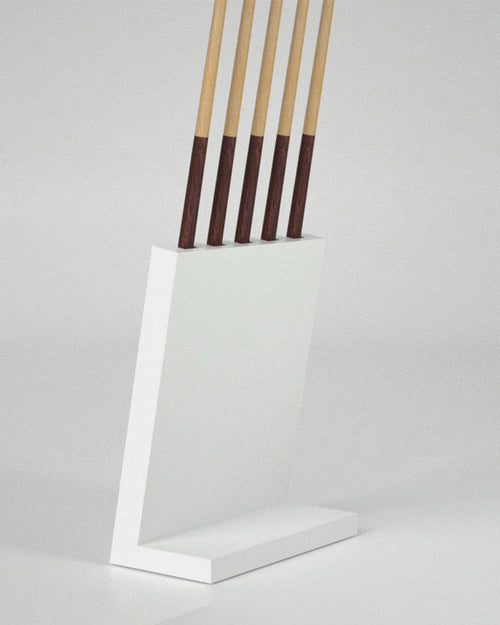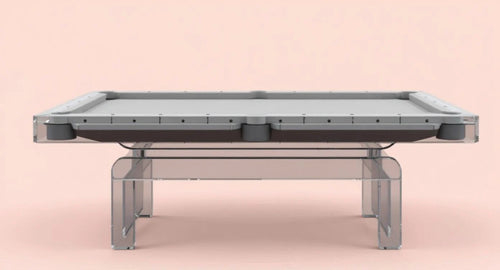Enjoy our modern designs
From Victorian ornament to streamlined modern—how industry, speed and materials science reshaped pool tables in four decades.
The first four decades of the 20th century marked a radical break from Victorian heaviness. Industry, speed, and mass production reshaped every object, from skyscrapers to chairs—and pool tables were no exception. Between 1900 and 1939, billiards design evolved alongside the Machine Age aesthetic, adopting streamlined forms, new materials, and geometric decoration.
Early 1900s: From Ornament to Utility
At the turn of the century, most pool tables were still solid oak or mahogany, carved and heavy. Yet industrialization was already pressing for efficiency. Tables became simpler in line, reflecting the transition from decorative Victorian craft toward more functionalist Edwardian design. Manufacturers experimented with veneered surfaces and metal fittings, moving slowly away from ornate motifs.
The Rise of Industrial Materials
The Machine Age wasn’t only about look—it was about what things were made of.
- Steel components: Frames and hardware start incorporating steel, cutting costs and allowing slimmer structures than all-wood predecessors.
- Formica & Bakelite: By the 1920s–30s, laminates and plastics appear on cue racks, ball returns and counters—glossy, “futuristic” finishes.
- Chrome detailing: Chrome-plated accents mirror automobile/appliance trends, bringing metallic sheen and modernity to billiard furniture.
Art Deco and Geometric Luxury
- Streamlined forms: Legs/aprons shift from carved cabriole to tapered, stepped and faceted profiles—echoing locomotives and skyscrapers.
- Inlays & veneers: Satinwood, zebrawood and contrasting veneers arranged as chevrons, sunbursts, parallelograms.
- Metal & glass: Aluminum edging, mirrored panels and glossy lacquer reinforce Deco’s shine-and-speed obsession.
Deco tables became status objects in hotels, clubs and ocean liners—the Machine Age’s glamour rooms.
The Great Depression and Streamlining
The 1929 crash forced a rethink. Instead of lavish ornament, 1930s tables embraced streamlining—smooth curves, horizontal bands, aerodynamic silhouettes. Cheaper to build, but visually optimistic about technology.
Brands like Brunswick introduced streamlined models with lacquer finishes, aluminum trim and simplified legs—tables that looked at home beside radios, refrigerators and automobiles of the era.
Legacy of the Machine Age in Billiards
- From ornate Victorian furniture to modernist, geometric sculpture.
- From all-wood builds to hybrids of wood, steel, chrome and laminates.
- From purely functional objects to style-conscious icons aligned with architecture and industrial design.
By 1939, pool tables were leaner, sharper and more modern—bridging craft tradition with an industrial future.
Conclusion
The 1900–1939 period proves billiards never sat outside culture. Tables absorbed the aesthetics of industry, speed and modernity, and Deco-era pieces remain coveted—not just for playability, but for embodying a design revolution.



